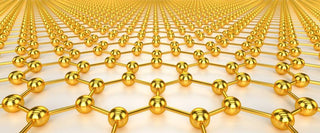Do you struggle with acne? Have you tried all sorts of products and treatments but still can’t get your skin pimple-free?
Like you, your skin is unique. And this means what works for someone else might not work for you, especially when it comes to treating a condition like acne. So for those looking for the right remedy for their skin, each breakthrough is a golden ray of hope in the quest for blemish-free skin.
For decades, doctors have said the "gold standard" for treating mild to moderate acne has been a combination of a deep pore cleanser like benzoyl peroxide and a topical antibiotic or sulphur drug to combat the bacteria.
Now the gold standard has changed. A new, high-tech treatment that involves some surprising features - gold nanoparticles, ultrasound and laser – addresses the concerns regarding other conventional acne treatments.
"This targeted, novel therapy could potentially lessen the frequency and intensity of breakouts."
Researchers from the University of California, Santa Barbara, and private medical device company Sebacia, have come up with a targeted therapy that has the potential to reduce how often and how severely breakouts occur. The therapy drives microscopic gold-coated silica particles through the follicle into the sebaceous glands using low-frequency ultrasound.
When the particles are embedded in the sebaceous glands, laser treatment is delivered. The near-infrared wavelength of the lasers interacts with the gold coating to create heat, and the heated particles, in essence, “shut off” the sebaceous glands. Then, the sebum, pore-blocking debris, and particles are pushed out of the gland as usual.
The method is called selective photothermolysis, and it doesn’t irritate or dry the skin’s surface the way other conventional topical treatments like benzoyl peroxide, salicylic acid, or retinoids might. In addition, unlike systemic treatments like antibiotics or isotretinoin, it poses no risk of resistance or long-term side effects.
According to the researchers, the treatment is especially well-suited for patients with advanced, severe or difficult-to-treat acne.
Acne & Diet: Myth or Must (INFOGRAPHIC)
While the treatment isn’t available to the general public just yet, here are some other surprising acne treatments that may also work for you:
Oral Probiotics. Just like in your gut, the bacteria that normally reside on your skin are involved in a balancing act. Studies have shown that taking a probiotic drink can improve acne, reduce sebum production, and decrease inflammation.
Topical Probiotics. Probiotics that are applied directly to skin can provide benefits in three ways: by creating a protective shield that prevents bad bacteria from causing an immune reaction, through antimicrobial properties that kill bad bacteria, and by promoting a calming effect that blocks immune reactions and their resulting flare ups. MyBody is a skin care company that offers a topical probiotic skin care line.
Photodynamic Therapy. Certain types of light – especially blue light – can kill the P. acnes bacteria that normally reside on the skin but cause acne when they overgrow. In severe cases, a medication like Levulan is applied to skin to increase light sensitivity. However, treatments usually have to be repeated several times for the best results.
Slow-Carb Diet. Studies have shown that high glycemic index (GI) foods and dairy are linked to acne, with experts theorizing that high GI foods trigger the release of hormones that stimulate oil production, promoting acne. But, following a low GI diet by replacing simple carbs with slow carbs can help to stabilize hormones and improve skin.
Oils. While it may seem counter intuitive, studies have shown that oils high in omega-3 and omega-6 essential fatty acids can be beneficial in treating the underlying causes of acne. People with acne often have low levels of essential fatty acids, which may contribute to comedonal impactions. Oral supplementation with fish or flax seed oils, topical application of oils like jojoba oil, which closely resembles natural sebum, and topical use of antibacterial oils such as tea tree oil and blue gum oil may help reduce acne lesions and symptoms.
If you’re struggling with spotty skin, be open to trying new treatments. You may just find yourself pleasantly surprised and blemish-free!

